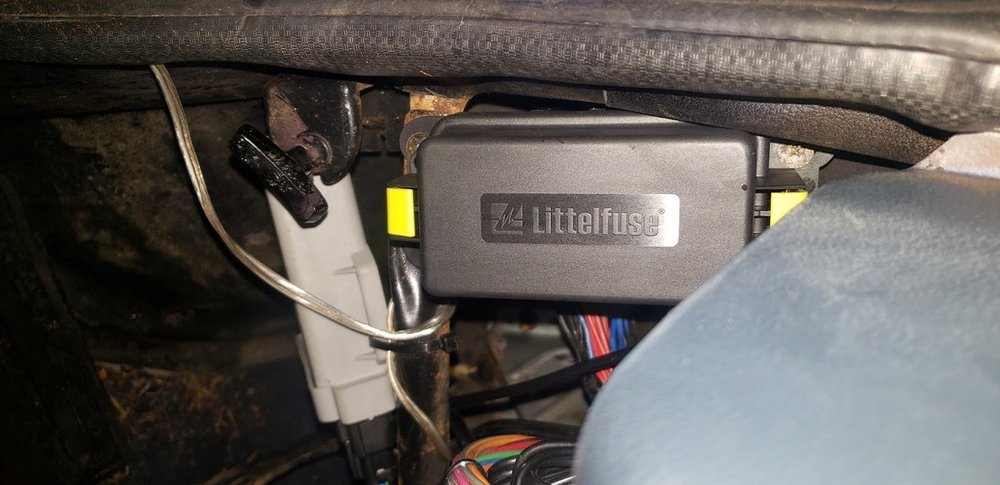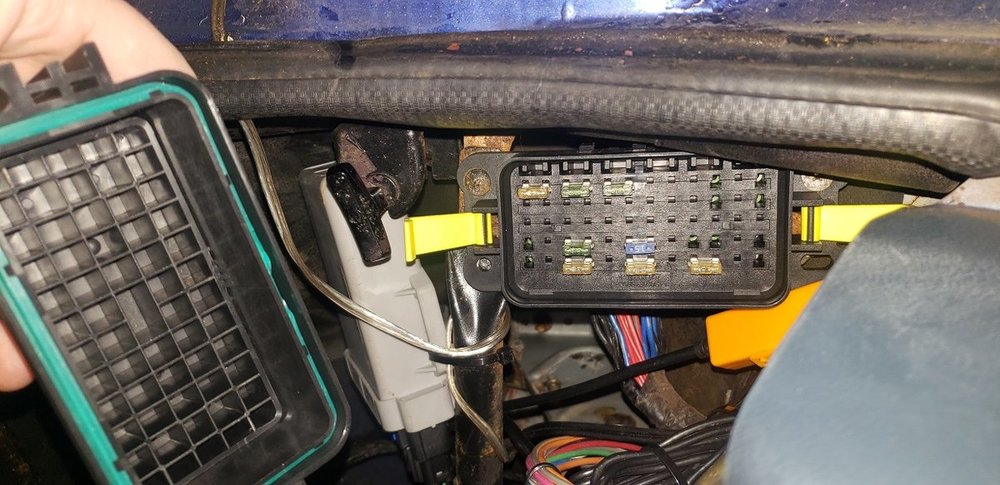-
Posts
23391 -
Joined
-
Last visited
-
Days Won
435
Content Type
Profiles
Forums
Gallery
Store
Everything posted by GeneralDisorder
-
I have had to replace a few first gen fuse panels for customers, and wanted to let everyone know about this panel I found that is a perfect fit - the bolt holes line up with the factory glass fuse panel. You do need a weather-pack crimper for this panel. It accepts micro fuses. It is also fully water tight so no worries about windshield leaks destroying the panel. https://www.ebay.com/itm/HWB60-ALNG-Waterproof-Fuse-Relay-Panel-Kit-with-Terminals-12V-Universal/142641687058 Anyone local to my shop - I am offering this upgrade for $300 parts and labor. GD
-
I know they are replacing these at an ALARMING rate at my local dealer. So many they can't keep the parts in stock to do the repairs. Seems like the cold weather is accelerating the failures. It is an extremely invasive job involving removing the engine, and I can see a lot of potential for young technicians to make mistakes. Also these engines are virtually 100% glued together with Three-Bond 1217H RTV sealant and all that has to be properly cleaned and re-applied leading to lots of potential for sloppy assembly. If I owned one I certainly wouldn't let the dealer do this repair. But then I can do it myself - not many have this option or the desire. Personally I'm glad I don't own any of the new chain engines. They are great if they have no problems, but when problems arise, they are too complex to be left in the hands of what Subaru now calls a "technician". GD
-
Nope - you are absolutely correct. Many of the stock Subaru applications have partial port blockage right from the factory - and this may in fact be on purpose to slow down flow in certain areas, or promote additional flow through other passages to even out the cooling effect and prevent hot spots. In any case the porting makes no difference and any gasket can be used with any head so long as the bore diameters match. Do not attempt to modify the gasket in any way as you will most likely create a problem where one did not previously exist. GD
-
It's closer to 3-4 hours. I don't use the SSM or anything like that. We just fill them up, run them through all their gears on the lift, check the fluid and drive them. Never had an issue. GD
- 11 replies
-
- p0768
- valve body
-
(and 4 more)
Tagged with:
-
Yep. We always replace the whole valve body. By the time one solenoid fails the rest are just as old. Half of them are on top of it anyway. This is also very common on the 10+ CVT's. GD
- 11 replies
-
- p0768
- valve body
-
(and 4 more)
Tagged with:
-
The 05+ models will throw codes for post-cat fuel trim if you pull the secondary O2 out of the stream with a spacer. A tuner with a Tactrix cable and the right ROM defs can simply program out the converter codes, and all the secondary O2 codes. You also have to disable (zero the table) for the post cat fuel trim. Although of course this is highly illegal and subject to a $10,000 fine so I can't do it or provide any information on where or who can do this. But that information is out there. GD
-
Yes it's virtually identical. They just didn't machine the oil return pipe hole (press fit) and they have the coolant and oil feed ports blocked with threaded plugs. You can use EJ20K cams directly in them also. If you use a JDM 20G intake it bolts right up. They are a fabulous value considering what they are capable of if used correctly with proper tuning, compression, etc. They would make a beautiful E85 engine build. I am sure I could put well over 200 to the wheels with E85 and 25D heads. GD
-
Yes just use the complete 25D engine. 251 pistons are from 99 to 05 SOHC 2.5 engines. 642 is the last three of the OEM head gasket part number. Those are for a 2004 STI. That piston and gasket combo will be about 10.5 compression and the gaskets won't fail because they are less than half as thick as the D gasket.
-
Just use a complete 25D. Swap the pistons for 251's and use the 642 head gaskets. There's your 170 HP. No problem. You'll have a very hard time hitting anywhere near 160 with EJ22 heads. They just won't flow that much NA. The 25D manifold is compatible with the harness you are running. Just swap over the electronics. 22 heads are a waste of time. That's why Subaru didn't use them on the 2.5. Duh. GD
-
I think we took off like .040" on each head. Castings.... well if you are looking at bare short blocks then you can see the piston dome shape and you can see the semi-closed bridges on the 255/257. That would be all I need. They have a VIN on them also unless they are RDOT blocks not installed at the factory. GD
-
EJ22 heads are worthless scrap metal. They can't flow any decent amount of power. Valves and ports are too small. Even with a turbocharger you can't hardly boost them past 250 HP. That's why Subaru didn't use that head design on a 2.5 block. They are pretty much a waste of time. You can build manifold adaptors and use a 20G ECU with an enduring solutions daughter board. GD
-
The best NA combo we have found for 90's cars is a 257 bottom end, shaved 25D heads, 257 head gaskets, and eccentric timing idlers to correct the belt length. Slot the 25D intake to bolt it up if needed. About 10.6:1 compression. Probably very close to 200 HP and tons of torque. We have one in a lifted Forester with big tires and still gets 27 mpg. GD






